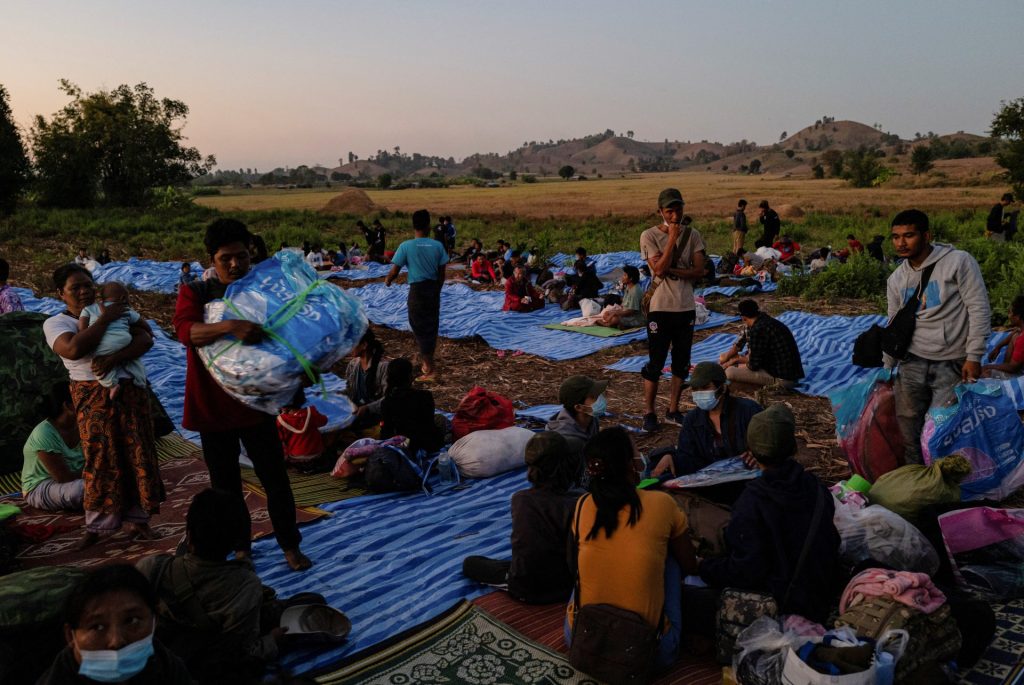Data Matters No. 9
(This article is a translation of the original Burmese language version that ISP-Myanmar posted on its Facebook page on March 23, 2022.)
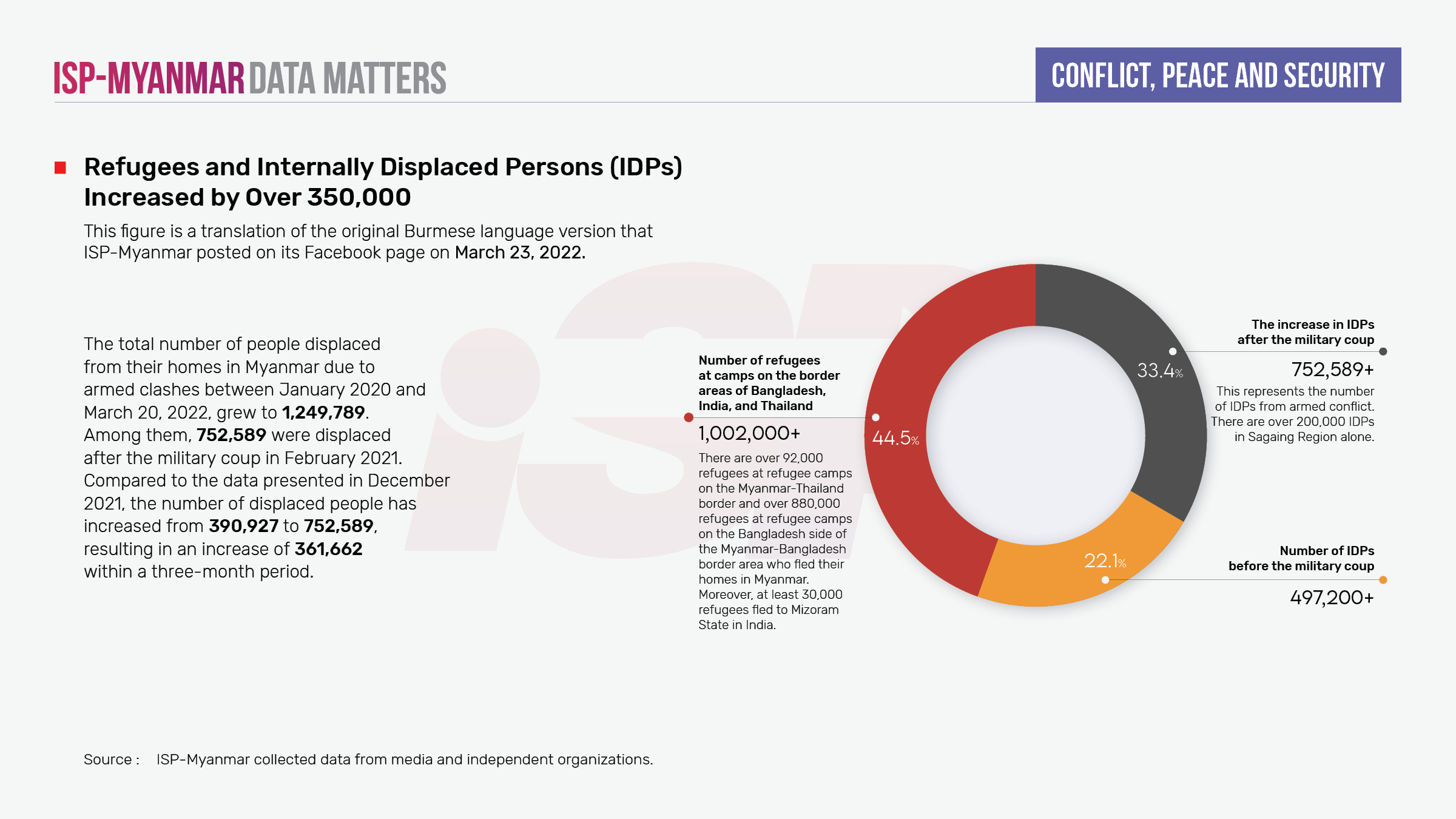
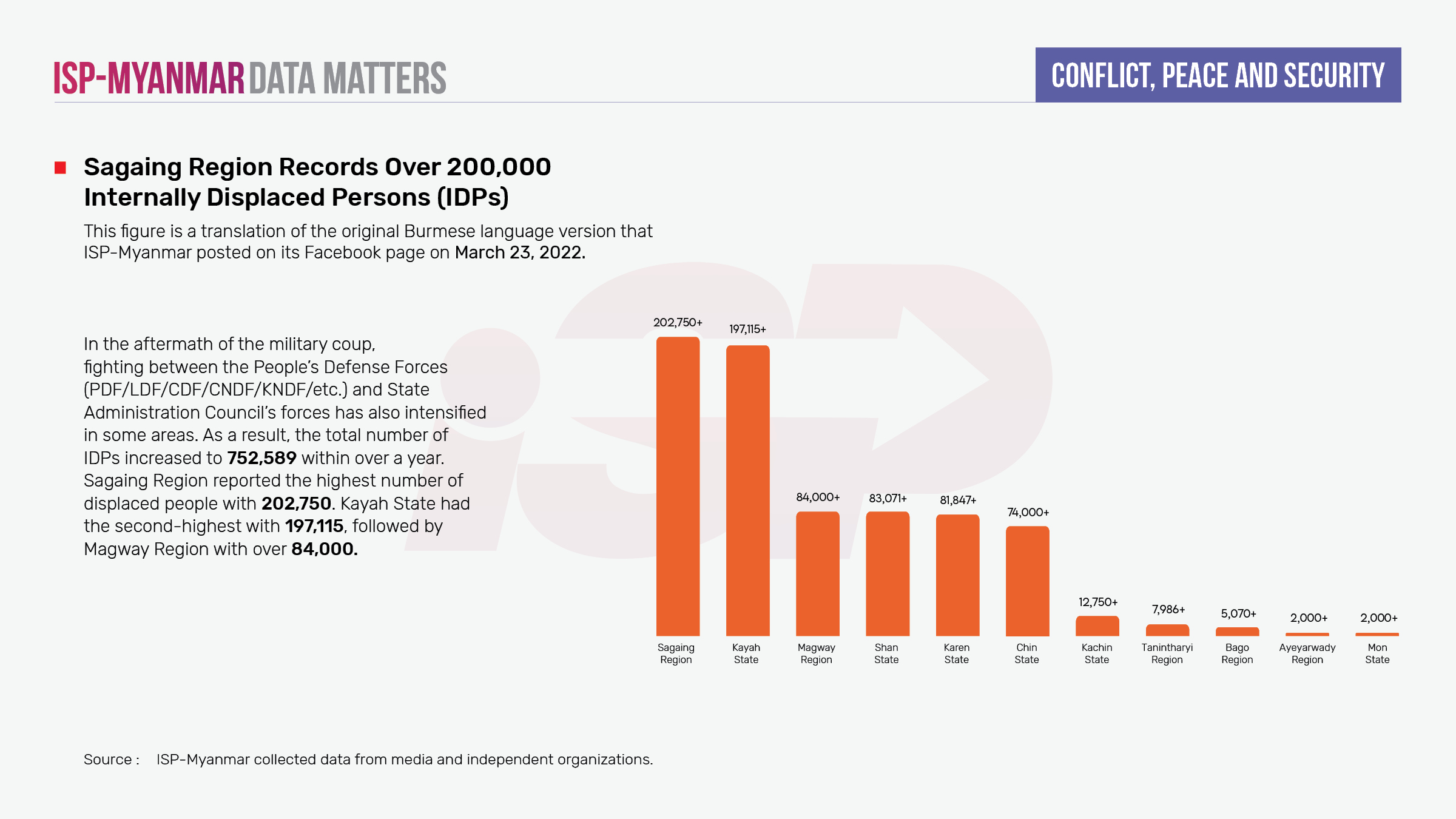
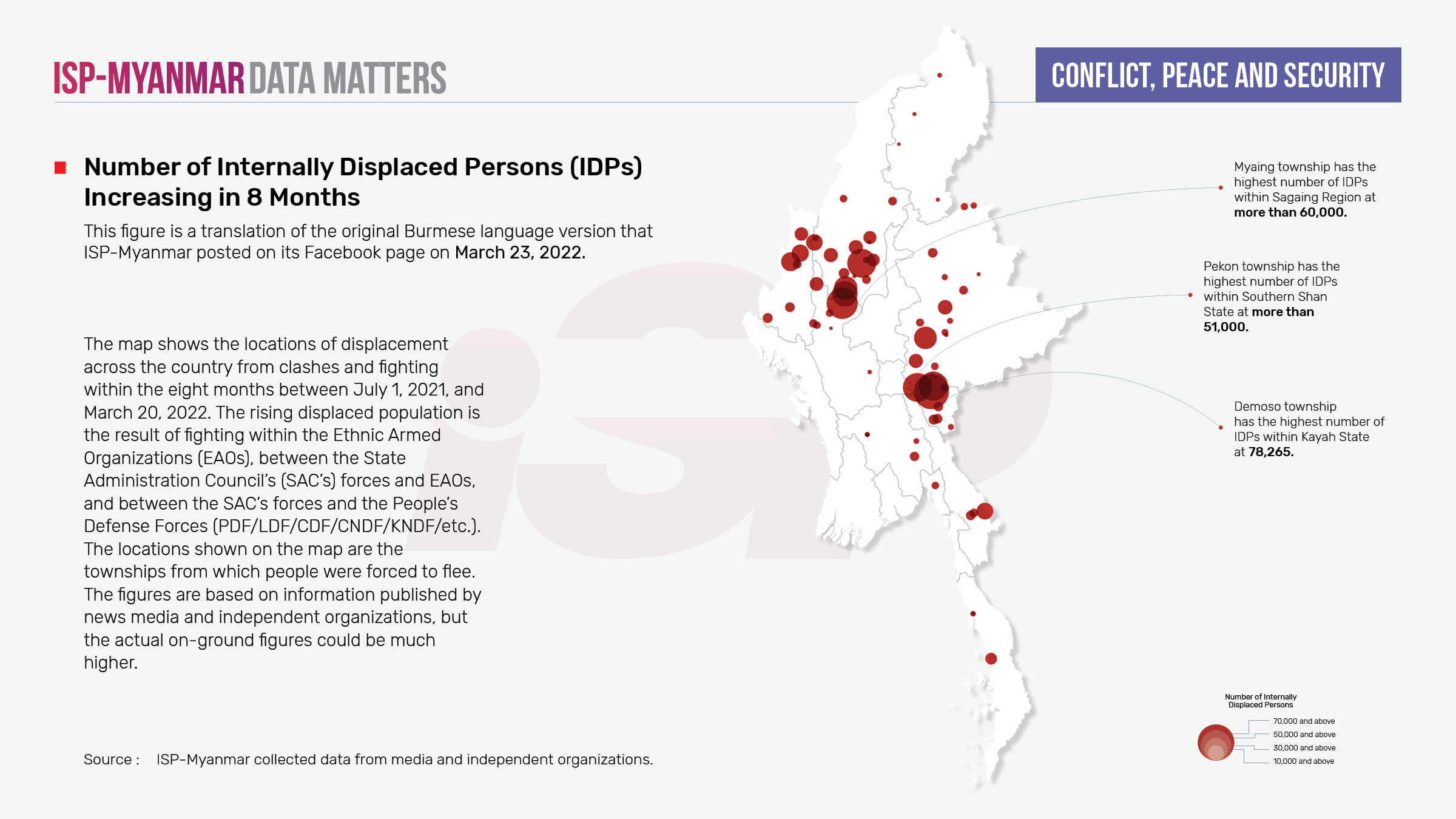
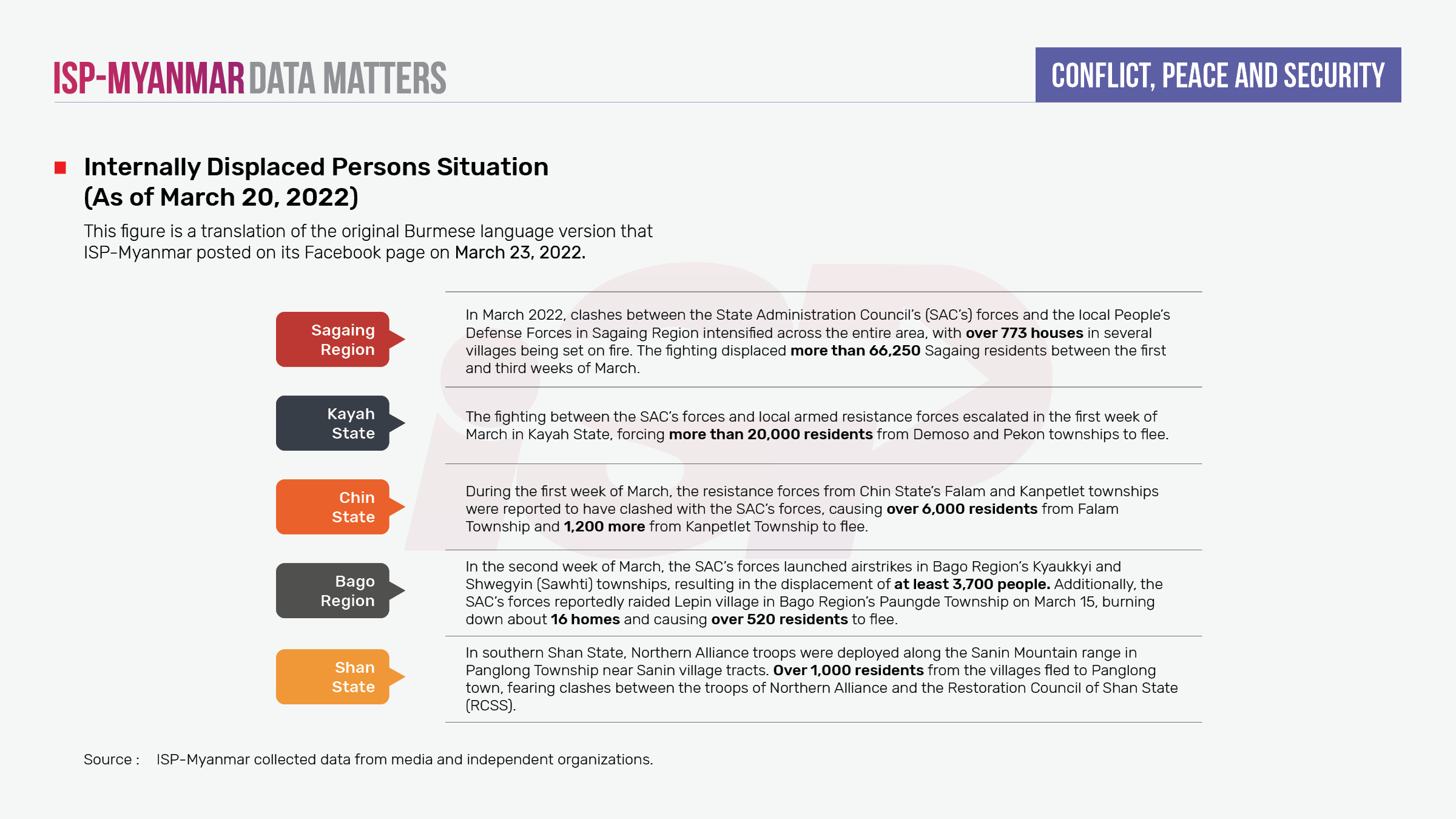
Since the military staged a coup d’état on February 1, 2021, various forms of mass protest against injustice have occurred across Myanmar. Protests are still ongoing in a variety of different forms, including armed conflicts between the ethnic armed organizations (EAOs) and SAC’s forces in ethnic regions where those EAOs are based. Simultaneously, fighting between the People’s Defense Forces (PDF/LDF/CDF/CNDF/KNDF) and SAC’s forces has also erupted in some areas. This has created a growing need for humanitarian assistance as conflicts and clashes have intensified and the number of internally displaced persons has risen.
∎ Refugees and Internally Displaced Persons Increased by More Than 350,000
Since the military coup on February 1, 2021, through March 20, 2022, battles and clashes across the country have resulted in a total of 752,589 IDPs. There were already over 497,200 IDPs prior to the coup, so the total number of people displaced from their homes in Myanmar grew to more than 1,249,789. Additionally, there are over 1,002,000 refugees living in camps at the borders with Bangladesh, India and Thailand.
After the coup, refugee numbers increased in regions where fighting between SAC’s forces and EAOs/local PDFs intensified. Sagaing Region has the highest number of refugees at over 202,750, followed by Kayah State with 197,115 refugees. Within the first three months of 2022 (as of March 20), the number of refugees increased by at least 361,662.
∎ The situation as of March 20, 2022
In March 2022, clashes between the SAC’s forces and the local People’s Defense Forces in Sagaing Region intensified across the entire area, with over 773 houses in several villages being set on fire. The fighting displaced more than 66,250 residents in Sagaing between the first and third weeks of March. Moreover, clashes between the SAC’s forces and local armed resistance forces also escalated in the first week of March in Kayah State, forcing more than 20,000 residents from Demoso and Pekon townships to flee. Similarly, at least 7,200 from Chin State’s Falam and Kanpetlet townships have fled because of fighting between local defense forces and the SAC’s forces.
In Bago Region’s Kyaukkyi and Shwegyin (Sawhti), at least 3,700 residents were displaced by the SAC’s airstrikes. In southern Shan State, more than 1,000 residents fled their villages after Northern Alliance troops were deployed along the Sanin Mountain range in Panglong Township. They feared potential clashes between the troops of Northern Alliance and the Restoration Council of Shan State (RCSS).
∎ Why does it matter?
By looking at the number of civilian fatalities and injuries, how they were killed and wounded, and the number of people displaced by fighting involving SAC’s forces and EAOs, or within EAOs themselves, it is possible to examine whether or not armed forces have committed human rights violations from the perspective of transitional justice. In addition, by studying the post-coup situation, further research can be conducted to examine whether there has been a change in conditions related to Myanmar’s peace process.
∎ Other relevant readings
On-the-ground reports from ethnic news organizations and other independent media groups provide regular updates about conflict situations, their impact, and the collateral damage in the aftermath of the military coup. These include reports of renewed fighting in ethnic areas, civilian fatalities, and rising refugee and IDP issues on the ground. In addition, records and reports by United Nations organizations such as the United Nations Office for the Coordination of Humanitarian Affairs (UNOCHA), and other independent local and foreign organizations also provide information about the ongoing conflict situation in Myanmar.

